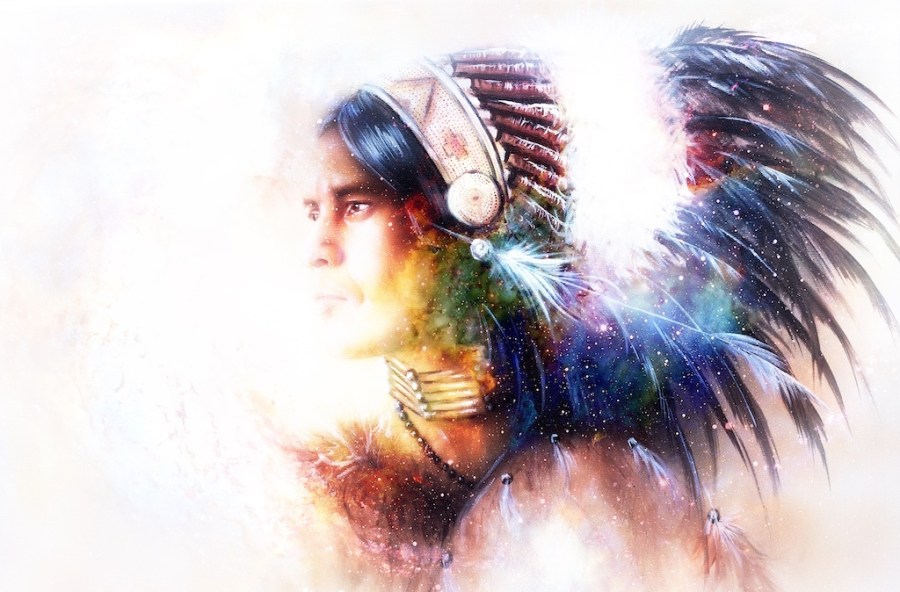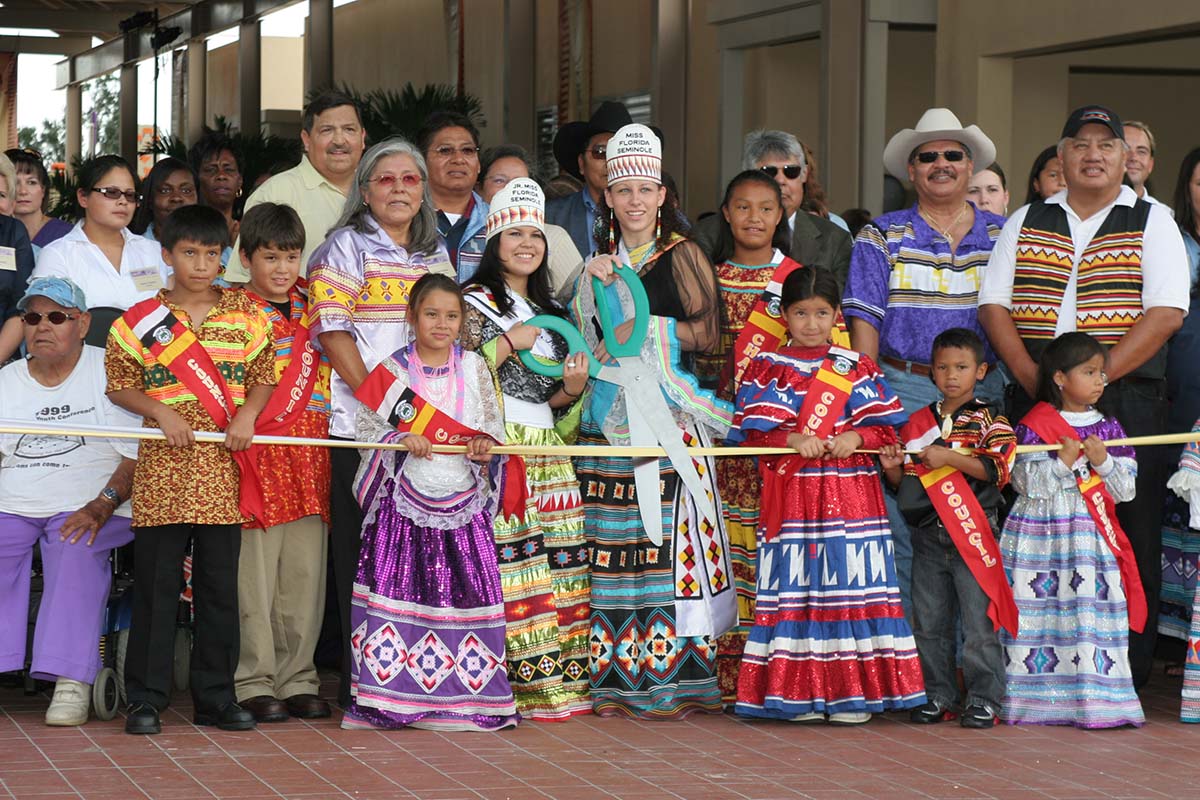
The Unconquered Spirit: Exploring the Enduring Spiritual Heart of the Seminole People
In the verdant, water-laced heart of Florida, where the ancient cypress stands sentinel over the whispering sawgrass, lives a spirit as enduring and resilient as the land itself: the spirituality of the Seminole people. Often known as the "Unconquered People" for their fierce resistance against forced removal, the Seminole have not only preserved their physical presence in their ancestral lands but, more profoundly, have maintained the intricate tapestry of their spiritual beliefs and practices, weaving them into the fabric of daily life and communal identity.
Unlike many Indigenous groups whose traditions were severely eroded by colonial pressures, the Seminole, by virtue of their strategic retreat into the impenetrable Everglades, managed to safeguard much of their cultural and spiritual heritage. This isn’t a static, historical artifact; it is a living, breathing worldview that continues to shape their understanding of the universe, their community, and their place within the natural world.

At the core of Seminole spirituality is a profound reverence for the Creator, known in their Muscogee (Creek) language as Hesakitamesee – "The Breath Holder" or "The Master of Breath." This supreme being is not distant or abstract but intimately connected to all of creation. Seminole elders often speak of a worldview where everything is interconnected: the land, the animals, the water, the sky, and all human beings. "We are all part of one great circle," an elder might explain, "and our actions ripple through it, affecting everything else. To walk in balance is to honor this connection."
This concept of balance and harmony – physical, mental, and spiritual – is paramount. It dictates their relationship with nature, emphasizing stewardship rather than domination. The Seminole understand the land as a sacred trust, a living entity that provides sustenance and spiritual nourishment. Their traditional homes, called chickees, open to the elements, reflect this connection, symbolizing their openness to the natural world and its inherent wisdom.
The Buska: A Ceremony of Renewal and Forgiveness
Perhaps the most significant and spiritually potent annual event for the Seminole is the Green Corn Dance, known as Buska (or Posketv). Held in late summer when the corn is ripe, the Buska is far more than a harvest festival; it is a profound ceremony of spiritual renewal, cleansing, and communal reaffirmation. It marks the tribal New Year, a time for forgiveness, purification, and the reestablishment of harmony within the community and with the spiritual realm.
The preparations for Buska are meticulous and deeply symbolic. Participants undergo periods of fasting and purification. The sacred fire, meticulously tended and never allowed to go out during the ceremony, is central. It symbolizes the eternal spirit of the people and acts as a conduit to the Creator. All old fires in homes are extinguished, and new fires are lit from the communal sacred fire, signifying a fresh start.
A key element of the Buska is the consumption of the Black Drink, a powerful emetic concoction made from roasted Yaupon Holly leaves. Drunk ritually, it is believed to cleanse the body and spirit, purging impurities and negative thoughts, preparing individuals for spiritual receptivity. "It is not just a physical cleansing," a Seminole cultural practitioner might explain, "but a spiritual one. It makes space for the good, for forgiveness, for new beginnings."
The ceremony also includes traditional stickball games, not merely as sport but as a spiritual contest, a symbolic battle between good and evil, often played with intense physical and spiritual energy. Stomp dances, characterized by rhythmic steps and the shaking of turtle shell rattles worn by women, are performed throughout the night, their movements echoing the natural world and reinforcing communal bonds.
During Buska, grievances are aired and resolved, disputes settled, and a spirit of forgiveness pervades the community. Laws are reaffirmed, and plans for the coming year are discussed. It is a time when the community comes together as one, acknowledging their shared heritage and their collective responsibility to uphold their traditions. The Buska culminates in a communal feast, sharing the bounty of the harvest and the renewed spirit of the people.

Medicine People and Herbal Wisdom
Central to Seminole spiritual life are the medicine people (often referred to as hathoktv or spiritual leaders/healers). These revered individuals are not only experts in traditional herbal remedies but also profound spiritual guides, dream interpreters, and keepers of ancient knowledge. Their wisdom, passed down through generations via oral tradition, encompasses a deep understanding of the healing properties of plants, the interconnectedness of mind, body, and spirit, and the spiritual roots of illness and wellness.
Seminole traditional medicine is holistic. A physical ailment might be seen as a manifestation of spiritual imbalance or disharmony with the natural world. Healing rituals often involve not just the application of herbal poultices or teas but also prayers, songs, and ceremonies aimed at restoring balance. The medicine person acts as a bridge between the physical and spiritual realms, guiding individuals back to a state of equilibrium. The Everglades, with its vast array of plant life, serves as a living pharmacy for these practitioners.
Oral Tradition and Storytelling
The transmission of spiritual knowledge and values in Seminole culture relies heavily on oral tradition and storytelling. Creation myths, legends of animal tricksters, moral fables, and historical accounts are passed down from elders to younger generations. These stories are not merely entertainment; they are living texts, imbued with spiritual meaning and practical wisdom. They teach about the proper way to live, the consequences of imbalance, the importance of respect, and the origins of their customs and beliefs.
Through stories, children learn about the characteristics of different animals, the sacredness of the land, the importance of community, and the power of the Creator. They internalize the values of humility, generosity, courage, and perseverance that have allowed the Seminole to survive and thrive.
Clan System and Identity
The matrilineal clan system also plays a significant role in Seminole spiritual and social structure. Individuals belong to their mother’s clan (e.g., Panther, Bear, Alligator, Wind, Bird), and these clans often have specific roles and responsibilities within the community, including in ceremonial contexts. The clan system reinforces kinship ties, defines social behavior, and provides a sense of identity and belonging. It is another layer of interconnectedness, ensuring that no one is truly alone and that the community functions as a cohesive, supportive unit.
Enduring Resilience in the Modern World
In the 21st century, the Seminole people face the challenge of preserving their spiritual traditions amidst a rapidly changing world. Modernization, technology, and the pervasive influence of mainstream American culture present complex dynamics. Younger generations are exposed to diverse belief systems and lifestyles, raising concerns about the continuity of traditional practices.
However, the Seminole Nation and the Seminole Tribe of Florida have actively committed to cultural preservation. Language revitalization programs, cultural centers, and educational initiatives aim to ensure that the ancient wisdom is not lost. The Buska and other traditional ceremonies continue to be practiced, serving as powerful anchors for identity and community. Elders tirelessly work to share their knowledge, understanding that the strength of the Seminole lies in the resilience of their spiritual heart.
"Our ancestors survived because they held onto their beliefs," a modern Seminole leader might assert. "Their spirit guided them through the wars, through the hardships. That same spirit guides us today. It’s not just about history; it’s about living our traditions, every single day, for the generations to come."
The Seminole spiritual practices are a testament to an enduring people who found strength and solace in their profound connection to the land and the Creator. They offer valuable lessons in environmental stewardship, communal harmony, forgiveness, and the power of resilience. As the sun rises over the Everglades, casting long shadows across the ancient waters, it illuminates not just a landscape, but a living spirituality that continues to nourish and guide the unconquered heart of the Seminole people.


